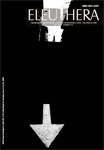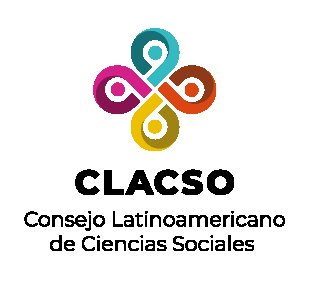Authors
Abstract
Abstract:This article presents an anthropological analysis and discussion about how some locations, the cementery, rivers and other geographical accidents acquire a new territorial configuration because of the funeral practices taking place there either as a ritual or situational derived from the armed conflict. It is supposed that although the conflict and the war have deeply shaped the parental composition of the families, the landowning and use of the land and the political movements, it is not less transcendental the influence of the conflict and the war in the restructuration of practices directly assembled with the cultural structures such as rituals and myths. In our case, we will focus on funeral rituals and acts –practices- that take place in the Andean municipalities of Marsella and Circasia, in the Departments of Risaralda and Quindio where, the temporality of the phenomenon is determined more by the facts than by chronology. The approach to the text is transversalized by the concepts of body, power, death and territory. Methodologically we proceed in accordance with the parameters of ethnography with workshops, active and passive type direct observations, and semi-structured and in depth interviews with inhabitants from the areas in which the investigation took place as well as with some authorities from the mentioned municipalities. Similarly, we used primary and secondary sources. The results and conclusions obtained during the process are given in the order of the preliminary elaboration of a comprehensive model where it is evident the relationship between body and power with death in the territory.
References
Agudelo, Felipe; Cardona, Álvaro; Serrano, Laura & Sierra, Raquel. (2008). Cadáveres, cementerios y salud pública en el Virreinato de Nueva Granada. Medellín: Imprenta Universidad de Antioquia.
Alzate, Adriana. (2007). Suciedad y orden. Reformas sanitarias borbónicas en la Nueva Granada 1760-1810. Bogotá: Editorial Universidad del Rosario.
Arboleda, Omaira & Hinestroza, Paula. (2006). “La muerte violenta y el simbolismo en las tumbas de los cementerios del Valle de Aburrá”. En Boletín de Antropología, No. 37, Vol. 20. Medellín: Universidad de Antioquia.
Bourdieu, Pierre. (1991). El sentido Práctico. Madrid: Tauros Ediciones.
Calvo, Óscar. (1998). El cementerio central. Bogotá, la vida urbana y la muerte. Bogotá: Tercer Mundo Editores.
Durkheim, Emile. (1982). Las formas elementales de la vida religiosa. Madrid: Akal.
Pritchard, Edward E. (1980). La religión Nuer. Madrid: Taurus.
________. (1991). Las teorías de la religión primitiva. Madrid: Siglo XXI.
García Alonso, María; Gutiérrez, Manuel; Flores Martos, Juan; López García, Julián & Pitarch,
Pedro. (2002). Según cuerpos. Ensayo de –diccionario– de uso etnográfico. Badajoz: Cicon Ediciones.
Gluckman, Max. (1962). Essays of the ritual of social relations. Manchester: Manchester University Press.
________. (1991). Ciencia y Brujería. Barcelona: Anagrama.
González, Juan Camilo. (2007). “El Cementerio de Usaquén, un estudio de caso sobre las manifestaciones espaciales del orden jerarquizado de la sociedad”. En Universitas Humanística, 64. Bogotá: Editorial Universidad Javeriana.
Flores Martos, Juan & González, Luisa (Coords.). (2007). Etnografías de la muerte y culturas en América Latina. Cuenca: Ediciones de la Universidad de Castilla-La Mancha.
Foucault, Michel. (1987). Vigilar y Castigar. Nacimiento de la prisión. México: Siglo XXI Editores. Hertz, Robert. (1990). La muerte y la mano derecha. Madrid: Alianza Editorial.
Huntington, Richard & Metcalf, Peter. (1991). Celebrations of death. The anthropology of mortuary ritual. New York: Cambridge University Press.
Lasonczy, Anne Marie. (2001). “Santificación popular de los muertos en cementerios urbanos colombianos”. En Revista Colombiana de Antropología, 37. Bogotá: ICANH.
Malinowski, Bronislaw. (1993). Magia, ciencia y religión. Barcelona: Editorial PlanetaDeAgostini.
Mauss, Marcel. (2002). Une catégorie de l’esprit humain: la notion de personne celle de “moi”. Edición electrónica realizada por Jean-Marie Tremblay: www.uqac.uquebec.ca/zone30/Classiques_ des_sciences_sociales/index.html
Merleau-Ponty, Maurice (1975). Fenomenología de la percepción. Barcelona: Editorial Península.
Nates, Beatriz. (2007). “Desterritorialización”. En Barraño, Ascención; García, José Luis;
Cátedra, María & Devillard, Marie (Coords.), Diccionario de relaciones interculturales. Diversidad y Globalización. Madrid: Editorial Complutense.
Nates, Beatriz. (2010). La territorialización del conocimiento. Categorías y clasificaciones culturales como ejercicios antropológicos. Barcelona: Editorial Anthropos. En proceso de edición.
Nates, Beatriz et al. (2010). Escenarios de postconflicto en Colombia 2005-2010. Estudio de las representaciones culturales e implicaciones sociales en municipios tipo. Proyecto. Universidad de Caldas.
Peláez, Gloria Inés. (2001). “Un encuentro con las ánimas; santos y héroes impugnadores de normas”. En Revista Colombiana de Antropología, 37. Bogotá: ICANH.
Ricoeur, Paul. (2004). La memoria, la historia y el olvido. Buenos Aires: Fondo de Cultura Económica.
Thomas, Louis-Vincent. (1983). Antropología de la Muerte. México: Fondo de Cultura Económica.
Velasco, Honorio. (2007). Cuerpo y espacio. Símbolos y metáforas, representación y expresividad en las culturas. Madrid: Editorial Universitaria Ramón Areces.
Velásquez, Paula. (2009). “Los cementerios… territorios intersticiales”. En Hacia la promoción de la salud, 14(2): 24-38. Manizales: Editorial Universidad de Caldas.
Verdery, Katherine. (1999). The political lives of death bodies. Reburial and Postsocialist change. New York: Editorial Universidad de Columbia.

 PDF (Español)
PDF (Español)
 FLIP
FLIP
























